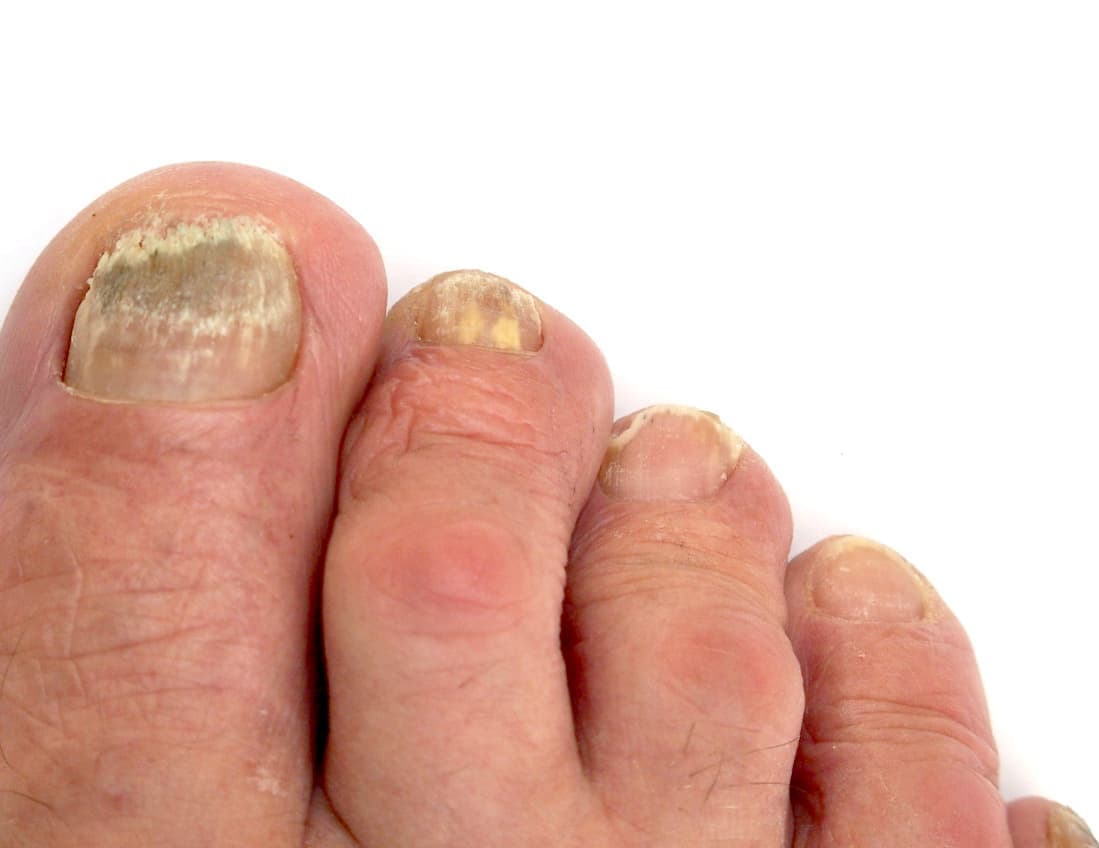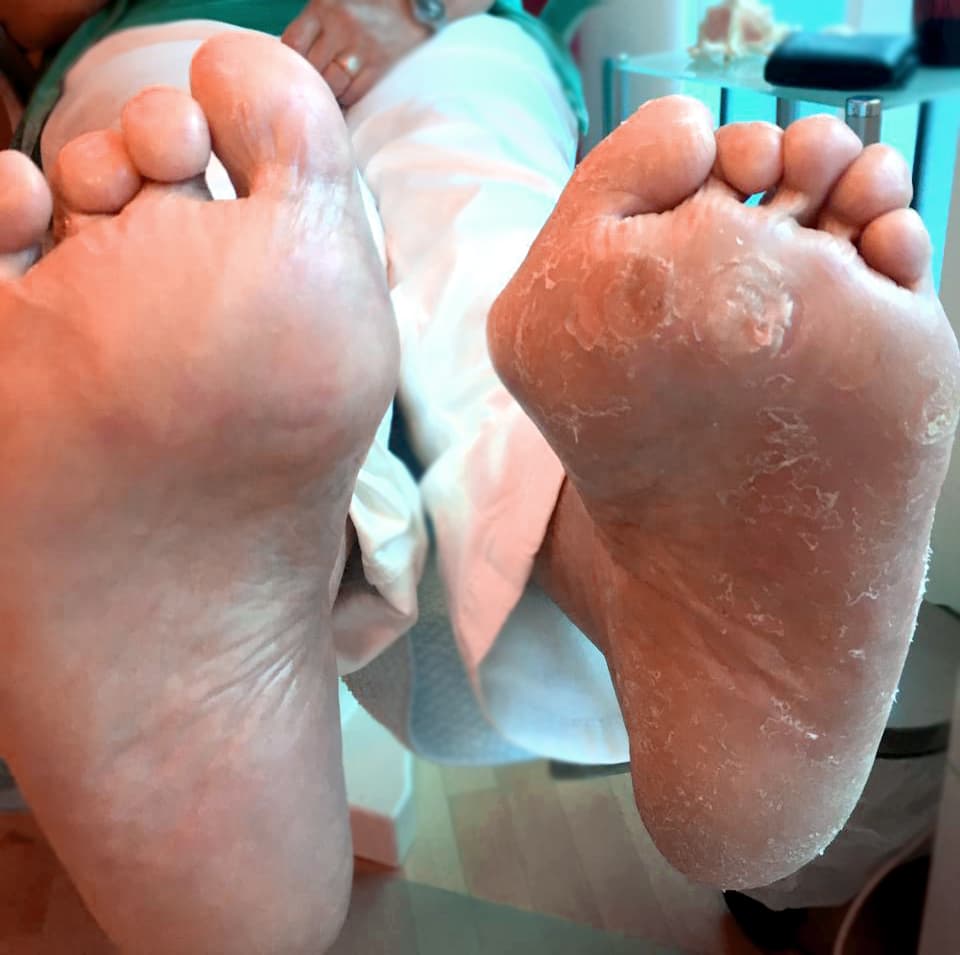Nail fungus and athlete’s feet, a common problem.
Dr. rer. nat. Volker Krainbring
Nail fungus and athlete’s foot is a widespread disease that affects over 16 million people in Germany alone. Both diseases are closely connected, extremely unpleasant and sometimes very lengthy to treat.
Especially the treatment of nail fungus requires a lot of patience and time – about 12 to 24 months – because the nail has to grow through completely.
In addition to tinctures, varnishes and creams, systemic treatment with tablets is often necessary. These substances sometimes have strong side effects. Particularly noteworthy is the damage to the liver caused by tablets.
Approximately 98% of nail fungus is caused by filamentous fungi, the so-called dermatophytes. They feed on the keratin tissue of the nails and the dead skin scales. They thrive particularly well in warm, moist environments, such as when wearing sports or work shoes. They spread by sporulation. Therefore, the usual filing and sanding of the nails is counterproductive, as this produces a fine powder that promotes the spread of the spores.
In addition, dermatophytes have become highly resistant to conventional antimycotics over time. Over 50% of dermatophytes are resistant!
Thus, any treatment, including systemic treatment, i.e. with tablets, only has a chance of success of less than 50%!
Evolution has provided us humans with a very effective natural protection for our skin.

After the loss of the strong hairiness, as in the times of the Neanderthals, evolution created the acid mantle for the skin. This is a protective barrier against parasites and fungi that still works very effectively.
It has been scientifically proven that not a single dermatophyte strain is able to carry out its metabolism in an acidic environment. Even the spores cannot thrive or spread. They therefore die. Fungal infections only occur when the acid mantle is disturbed!
The causes for this can be very different, e.g. due to injuries, alkaline detergents, genetic reasons (extremities such as hands and feet then have an alkaline pH value of approx. 7.3 – 7.8 and not 5.5 – 6.5 as normal) or poor blood circulation.
The poor blood circulation in older diabetics alone leads to the fact that every second diabetic over the age of 60 suffers from nail fungus. All treatments require great care and patience on the part of the patient. In addition to regular treatment, this also includes hygienic measures such as changing stockings daily and washing them at 60-65 degrees Celsius to kill the spores, and disinfecting shoes once a week.
A small tip: Do not use alcohol-based disinfectants on leather shoes, as they make the leather porous and brittle, but always use alcohol-free disinfectants.

